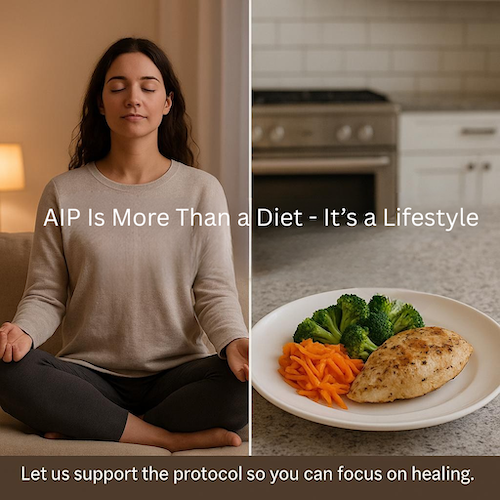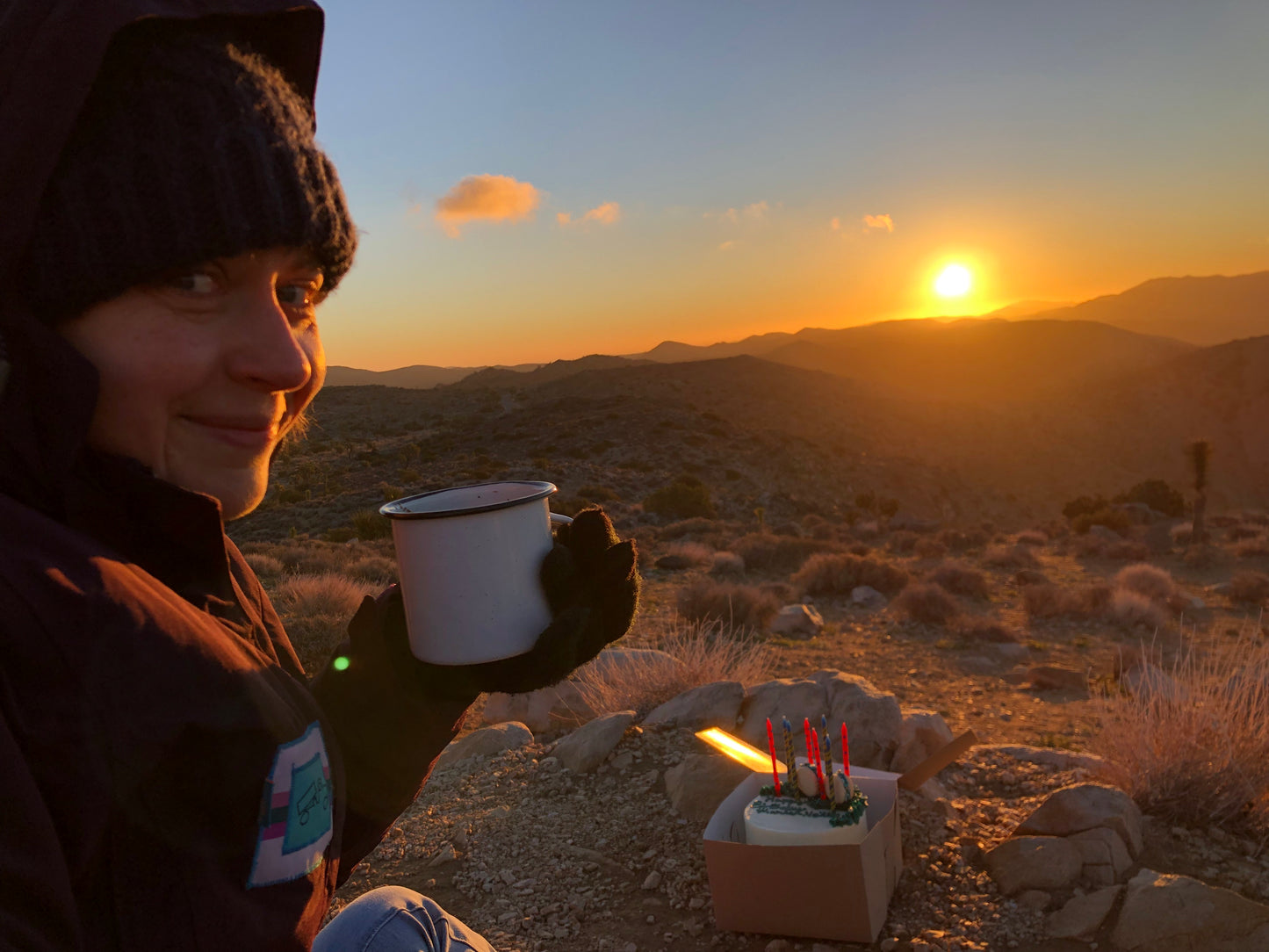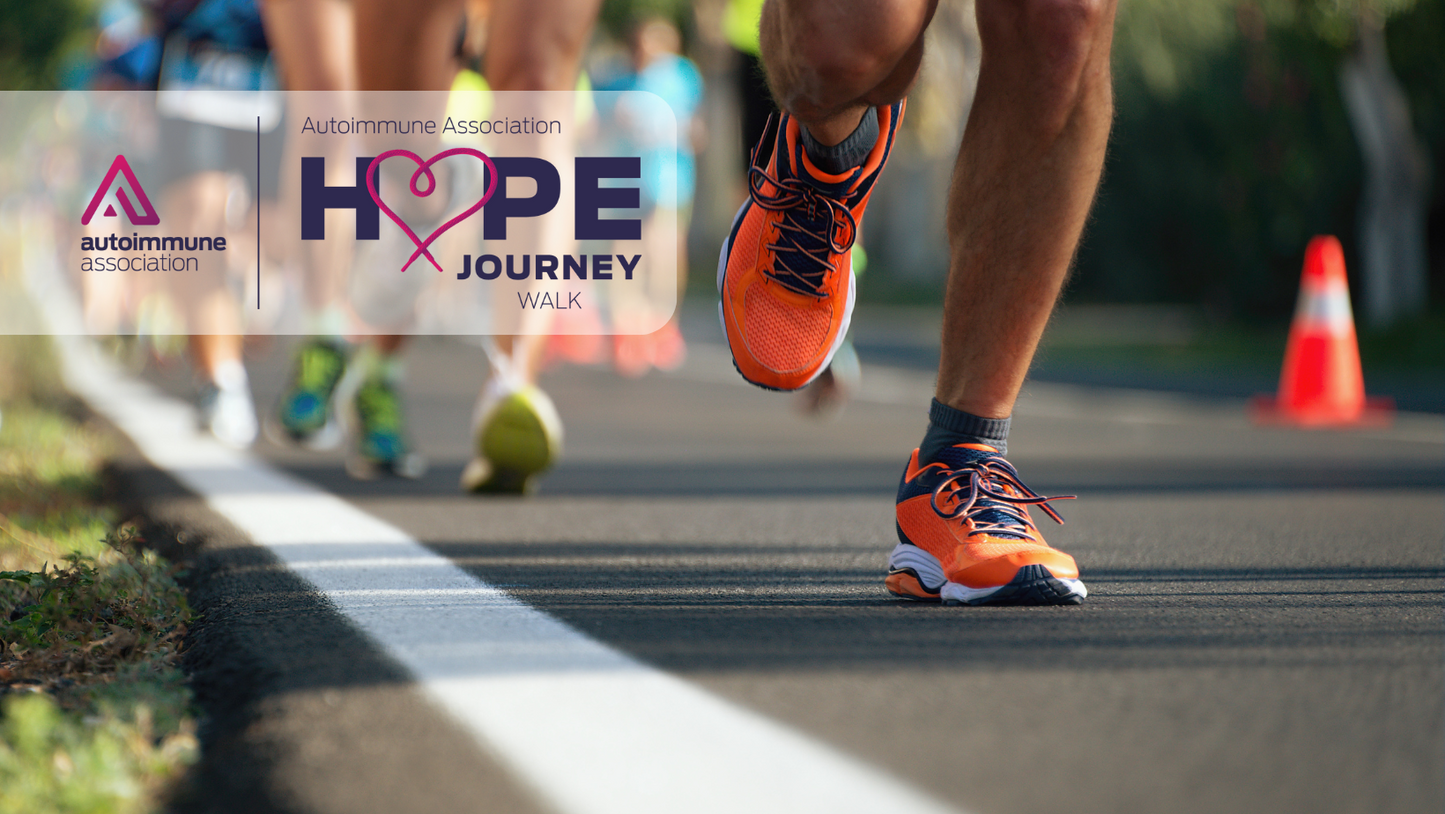
Embracing the Full Protocol for True Healing
When people first discover the Autoimmune Protocol (AIP), their attention naturally gravitates toward the food list—what to eliminate, what to reintroduce, and what’s safe to eat during each phase. But if we stop there, we miss the true power of this healing framework. AIP isn’t just a diet, it’s a full protocol. And that distinction matters.
What “Protocol” Really Means
The word "protocol" reflects a structured and comprehensive approach. AIP was designed to support immune regulation and reduce systemic inflammation, not only through diet, but also through lifestyle. This includes stress management, sleep hygiene, regular physical activity, social connection, connection to nature, and self-care. In addition, reducing exposure to toxic substances is something we should also be mindful of. These elements all impact our immune system and play a vital role in reversing symptoms.
Think of it this way: you could be eating the cleanest, most nutrient-dense meals every day, but if you’re chronically stressed, sleeping five hours a night, and running on caffeine and cortisol, your body still won’t feel safe enough to heal.
The Modern Lifestyle Barrier
As AIP Certified Coaches and Nutritional Therapy Practitioners, we repeatedly encounter one major obstacle: life is busy. Let’s face it, most of us are diagnosed while living busy lives, managing careers, families, and numerous other responsibilities. We’re exhausted. Shopping for specific ingredients, reading labels, re-reading labels, planning elimination-compliant meals, and batch-cooking can quickly become overwhelming, especially when you’re already not feeling your best.
This is where many people struggle. They know the protocol is robust, but they simply don’t have the time or energy to do it all on their own. And one more fact, when we don’t have time to feed ourselves, we are even less likely to make time for all of the other lifestyle components. That very dysfunction fuels a vicious cycle that keeps us trapped in autoimmunity.
The Autoimmune Mindset
Research shows that isolation ranks as one of the top causes of mortality. Just think of how something as simple as the barista serving you your cup of coffee with kindness and a smile can make you feel. We thrive through connection, we are wired to because connection equals safety for our nervous system. This is also why people want to follow trends; fitting in is built into our nervous system and registers as a survival instinct. Simply put, connection is vital.
In Japan, studies have shown that forest bathing, or spending time in nature, significantly reduces inflammation. A recent study measured all inflammatory markers of a group of people heading on vacation. Half of them vacationed in an urban setting, while the other half vacationed in nature. The same inflammatory markers were retaken after they returned from their vacation and 30 days later. What was revealed was that the group who spent their time in nature not only showed a significant decrease in their inflammatory markers, but that this effect lasted for at least 30 days. The urban vacationers did not experience a significant change in their inflammatory markers.
Movement is life…we hear that a lot. Let’s set clear expectations, though; movement doesn’t have to mean intense interval exercises or long hours on the treadmill. When it comes to autoimmunity, movement is primarily used to remove toxins from the body, stimulate the lymphatic system, and promote tissue repair. Many of us with autoimmune disease, myself included, deal with something called exercise intolerance. For years, I didn’t know what was wrong with me and why, despite working out routinely, I never experienced that “blissful addictive feeling of loving to exercise” as so many people promised me I would feel. Instead, an hour workout meant I was done for the day and part of the next, completely wiped out, achy, depressed, and not myself. Then I learned about exercise intolerance, which is common with Hashimoto’s - one of the conditions I have been diagnosed with - and suddenly it all made sense. My point is, with an autoimmune disease, exercise HAS to meet you where you’re at and not the other way around. And even if it’s just a 5-minute walk 3 times a day, and some deep breathing exercises, that can be a solid place to start.
Sleep…if you are part of the human species, you should aim for 7- 9 hours of sleep per night. For women with autoimmune disease, 10 hours is the recommended length of time one should sleep. The first 5 hours of our sleep are spent repairing tissues, and the following 2- 3 hours focus on brain health. This is a standard house cleaning routine. Having an autoimmune disease, particularly during a flare, looks like you’ve hosted a college grad party in your home, meaning you need more time for deep cleaning and repair. Sleep is key. It regulates blood sugar, optimizing our liver function, which in turn helps our liver better eliminate toxins. It improves digestion and our ability to take in nutrients, it rebalances our hormones, and drastically reduces inflammation.
Stress - Modern, busy life is stressful, and we often pride ourselves on being champion stress navigators, but at what cost? Not all stress is negative, but if you find yourself feeling overwhelmed in an area of your life, take a moment to create what I call “a stress bucket”. Make a list of all the things that create stress in your life and place them in a bucket. Once a day, pick one item you will work on reducing stress from that day. Some things will require long-term management, in which case, they can go back into the bucket each day until you have successfully eliminated that stress from your life. The goal is to empty the bucket, one item at a time, but take your time; don’t stress about it.
Finally, neglecting self-care is stressful for the body, which is why it often goes hand in hand with it. Additionally, as we navigate a stressful life, self-care can sometimes feel like a form of laziness. Or, we simply don't have enough time. Remember, self-care is more than an activity we do for ourselves. It CAN be, but it could also be taking 10 seconds to connect in our body, feel our breath, our heart beating, and listen to our thoughts.
Dr. Keesha Ewers, in her book Solving The Autoimmune Puzzle, talks about something called the autoimmune mindset. This refers to that negative self-talk. We’re all familiar with the concept that our brain doesn't distinguish between our thoughts and what is true; it accepts them at face value. So any self-loathing thoughts, which are often common in people battling autoimmunity, interestingly, will frequently manifest as a physical symptom. In that sense, self-care can simply be catching that thought and reformulating it positively to lift yourself up. Our thoughts are the nutrients we feed our souls.
Broken down like this, it’s clear that each branch or pillar of the autoimmune protocol is interconnected and all equally important to get the most benefits from the protocol. But the question remains, how does one do it all?
Support Makes the Protocol Sustainable
Whether it’s asking a friend for help, creating a support group or using tools that exist to help you be successful on your journey, by all means, use all the resources you can. Working with an AIP-certified coach can be a great starting point. AIP was first introduced almost 15 years ago, and the good news is that many early adopters of the protocol have created tools, services, and products with the mission of helping others navigate AIP with the extra support they wished they had themselves. Companies like Urban AIP, EAT Gangster, SIP Herbals, KC Naturals, Get Saucy, and so many more all have the same thing in common: we created them, fellow autoimmune warriors and AIP-certified coaches, to make your healing journey more successful.
Observing in my own practice how clients who honored all facets of the protocol not only recovered faster but were also more successful at reintroduction and maintenance, it became clear to me that lifestyle support was essential. And yet, how do we practically live the AIP lifestyle in a way that fits real life?
My solution was simple - remove the one component of the protocol that could be handled by someone other than the client or patient and outsource it. In other words, take the stress of cooking out of the equation. As a meal and snack company, Urban AIP exists to bridge the gap between healing and convenience. By taking care of the planning, sourcing, and cooking, we remove a significant source of stress. Our customers can stay compliant with the elimination phase without the burden of having to do everything from scratch, allowing them to focus on other pillars of the protocol, such as rest, sleep, mindfulness, and self-care. In addition, this gives them a chance to discover all the possibilities that AIP foods can offer, making it even easier to transition to cooking their meals when they are ready.
When the pressure to cook is lifted, your nervous system can finally breathe. That’s when the healing process begins to take hold.


